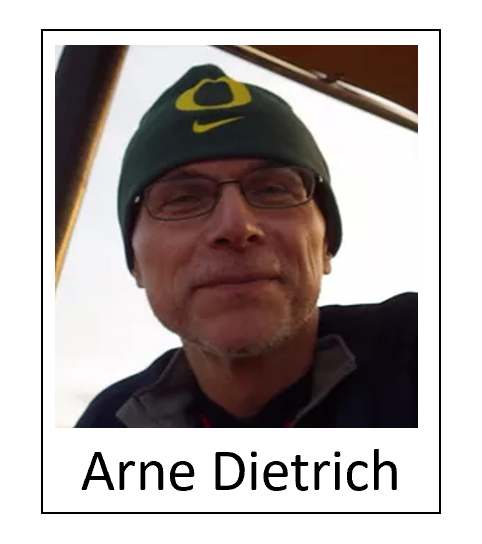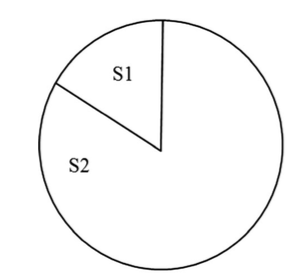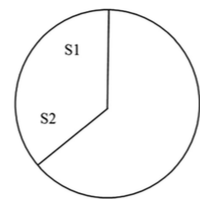When you think of creativity what do you imagine? There are a lot of examples to choose from, like cooking up a new take on a traditional dish, working with a team to reason through a difficult business problem, writing short stories, trouble-shooting an engineering problem that had everyone else stumped, or coming up with a new dance move. Yes, there is indeed diversity in human creativity.
Given this diversity, it’s no surprise there have been many approaches to studying creativity over the years.
But much of the current scientific study of creativity has settled on using only one approach and one set of tests. Is this enough, or are we missing out on the diversity of human creativity?
The Divergent Thinking paradigm
The most frequent way of measuring creativity in the lab and in the field is with the divergent thinking paradigm. This paradigm originated in the work of J.P. Guilford (see here and here), who proposed a multidimensional model of human intelligence. One of these dimensions (“operations”) includes divergent production, which is our ability to generate many novel solutions to a given problem.
Guilford created tests to measure people’s divergent production, such as:
- “Name all the things that are white and edible.”
- “Name all the possible uses for a brick.”
- “Write as many sentences as you can using the words desert, food, and army.”
- The tests were adapted by E. Paul Torrance in 1966 and released into the world. They quickly took off.
The tests have since been translated into over 40 languages, and are now used widely across settings, from identifying gifted students in schools to measuring creativity in business contexts.
However, there have been concerns raised about the dominance of this framework, including the failure of creativity tests to predict real-world creativity.
To develop new frameworks and tests, it’s first necessary to first take a step back and understand the range of creative activities we engage in.
 In a recent article in Psychonomic Bulletin & Review, Arne Dietrich offered a new typology of creativity in the wild. This framework distinguishes three types, or modes, of creativity: a deliberate mode, a spontaneous mode, and a flow mode.
In a recent article in Psychonomic Bulletin & Review, Arne Dietrich offered a new typology of creativity in the wild. This framework distinguishes three types, or modes, of creativity: a deliberate mode, a spontaneous mode, and a flow mode.
Let’s take a look at the three types of creativity, and where we might find them in the wild.
Deliberate mode – Working out problems on a whiteboard
For many people, a great spot to get creative is at a whiteboard. You can spread out, draw diagrams, make lists, erase, and update as you think through problems and solutions. The mode you’re likely in when problem-solving at a whiteboard is what Dietrich calls the “deliberate mode” of creativity.
In the deliberate mode, we consciously process information, use top-down attention, retrieve information from memory, and plan. This mode is intentional and effortful, systematic and logical.
Neurally, this mode is associated with prefrontal cortex activation, which allows us to unleash the full arsenal of higher-cognitive functions on whatever we are working on.
But this mode can have downsides, too. When we’re in this mode, we’re unlikely to come up with a really unconventional, “out-there” solution or idea.
Consider the search space pictured below, with two solutions in the space (S1 and S2). When in the deliberate mode, our search is more “opinionated”—we hone in on a search space (the slice of the space outlined) that is most likely to contain an answer based on our prior knowledge. This works efficiently if we are looking for a solution that is in line with accepted knowledge (S1), but it doesn’t help us produce an unexpected, unconventional solution (S2).

Spontaneous mode – An aha moment in the shower
Another place people frequently find creative inspiration is in the shower. When you are in the shower, you are likely not actively focused on solving a particular problem, but rather mind wandering or daydreaming. Yet occasionally, you come up with a solution to a problem that’s been on your mind for weeks. A classic water-related eureka moment. This corresponds to the mode that Dietrich calls the “spontaneous mode” of creativity.
In the spontaneous mode, we work on a task unconsciously, sometimes over a long time. We can retrieve information from long-term memory, but this retrieval is undirected. We can’t control attention, and lack a sense of agency. We may only be aware of the outcomes of this mode when a solution or an idea pops up in working memory.
Besides daydreaming in the shower, Dietrich suggests that other altered states of consciousness, such as a runner’s high, dreaming, meditation, hypnosis, flow, and drug states can also provoke the spontaneous mode of creativity.
Neurally, the spontaneous mode can be tentatively associated with increased activity in the default mode network and decreased activity in the prefrontal cortex, giving us less access to powerful cognitive functions, but at the same time putting fewer constraints on the associations we come up with.
This allows us to find solutions that would not be available to us using the deliberate mode. Consider the solution space we talked about earlier. In the spontaneous mode, our search is less “opinionated”, and we have a larger search space (the slice of the space outlined in the next figure below). This makes the search less efficient, and lengthier, but also makes it possible to find an unconventional solution (S2) that would not be part of our search space in the deliberate mode.

No wonder that the solutions we come up with in the spontaneous mode sometimes surprise us and strike us as accidental. They can be really out there.
Flow mode – In the zone at the studio
A final place where many are lucky to experience creativity is in the studio: painting, drawing, or sculpting. This is when we are likely to experience the “flow mode” of creativity, which was popularized in Mihaly Csikszentmihalyi’s book Flow.
In a flow state, we are highly attentive and our actions are fluid and effortless. We may have practiced a particular motion hundreds of thousands of times before executing it. For example, when painting, the way a brushstroke is executed is automatic. We rely on implicit knowledge, processing, and action– we don’t explicitly think about what we’re doing or plan out our movements.
The flow mode is very different from the deliberate and spontaneous mode because, unlike the other two, it is closely tied to motion and because it is fully unconscious.
Neurally, this mode is based in the basal ganglia, cerebellum, and the supplementary motor areas. It is associated with decreased activity in the prefrontal cortex, leading to increased reliance on implicit processing and knowledge.
In addition to the studio, we might experience the flow mode of creativity when playing music, cooking, or playing sports. The key feature of creativity in the flow mode is that it occurs online and in real time, and is linked with our actions.
We need all three types of creativity
Ultimately, no one type of creativity is better than another. Each is useful for a different purpose, and is associated with a very different subjective experience.
Starting with the types of creativity that occur in the wild, the hope is to develop a framework and measures that truly encompass the diversity of human creativity.
Psychonomics article highlighted in this blogpost:
Dietrich, A. (2018). Types of creativity. Psychonomic Bulletin & Review. DOI: 10.3758/s13423-018-1517-7.
